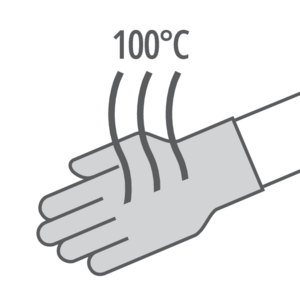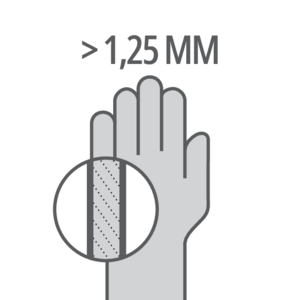Description
LATEX ON INTERLOCK COTTON LINING GLOVE – LENGTH: 30 CM -Multi-standard chemical glove for comfort and durability, ideal for the food industry
₱419.00
Product images are for illustrative purposes only and may differ from the actual product.
Click here to view the Size Guide
Glove kind: Tight glove
Tight glove kind: Supported
Coating material and finish: Smooth latex / 100% natural latex.
Coating level: Fully coated
Number of layers: Single layer
Arm level protection: Forearm cuff (< 400mm)
Thickness (μ): 1,25
Thickness (inch): 0.0492

Versatile glove
Resistance to chemicals and contact heat of 100°C for 15 seconds
Reduces perspiration thanks to its excellent breathability
Performance
Extra thick and long for extra protection of the entire arm
Durability
High-quality coating extends the life of the glove and provides excellent protection for the hand


EN420:2003+A1:2009 General requirements
| 5 | Dexterity (from 1 to 5) |

EN388:2016 Protective gloves against mechanical Risks (Levels obtained on the palm)
| 4 | Resistance to abrasion (from 1 to 4) | |
| 1 | Resistance to cutting (from 1 to 5) | |
| 2 | Resistance to tear (from 1 to 4) | |
| 1 | Resistance to puncture (1 to 4) | |
| X | Resistance to cutting by sharp objects (TDM EN ISO 13997) (from A to F) |

EN407:2004 Protective gloves against Heat & Fire risks (X = Unrealized test)
| X | Resistance to flammability (from 1 to 4) | |
| 1 | Contact heat resistance (from 1 to 4) | |
| X | Convective heat resistance (1 to 4) | |
| X | Radiant heat resistance (from 1 to 4) | |
| X | Small splashes of molten metal (from 1 to 4) | |
| X | Large quantities of molten metal (from 1 to 4) |

EN ISO 374-1:2016 Protective gloves against dangerous chemicals and micro-organisms – Part 1: Terminology and performance requirements for chemical risks.
| TYPE | A | Type A – Water and air tightness according to EN ISO 374-2:2019. Permeation resistance to at least 6 chemicals at level 2 according to EN16523-1: 2015, |
| . | Determination of resistance to degradation by chemicals according to EN ISO 374-4: 2019. Part 4: Determination of resistance to degradation by chemicals. | |
| A | 2 > 30 mn | Méthanol (A) CAS 67-56-1 |
| K | 6 > 480 mn | Sodium hydroxide 40% (K) CAS 1310-73-2 |
| L | 4 > 120 mn | Sulphuric acid 96 % (L ) CAS 7664-93-9 |
| M | 6 > 480 mn | Nitric acid 65% (M) CAS 7697-37-2 |
| N | 3 > 60 mn | Acetic acid 99% (N) CAS 64-19-7 |
| P | 6 > 480 mn | Hydrogen peroxide 30% (P) 7722-84-1 |
| T | 6 > 480 mn | Formaldehyde 37% (T) CAS 50-00-0 |

EN ISO 374-5:2016 Protective gloves against dangerous chemicals and micro-organisms – Part 5: Terminology and performance requirements against micro- organisms risks.
| BACTERIA + FUNGI | . | BACTERIA + FUNGI: Water and air tightness according to EN ISO 374-2:2019. |
GLOB MIGR Food contact – Overall Migration
| . | Contact with any food type |